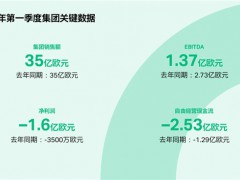據(jù)油價網(wǎng)8月15日報道,美國能源信息署(EIA)連續(xù)第二個月預(yù)測美國頁巖油產(chǎn)量將下降,預(yù)計9月份頁巖油總產(chǎn)量將從本月的943.5萬桶/天降至941.5萬桶/天。
7月份,EIA還預(yù)測美國頁巖油產(chǎn)量將在8月份下降,本月平均產(chǎn)量為939.7萬桶/天,低于7月份的941.5萬桶/天。
產(chǎn)量預(yù)測在一定程度上是基于不同頁巖區(qū)的鉆機數(shù)量,這可能不像EIA所說的那么重要。業(yè)內(nèi)高管表示,在這個財報季,他們的油井產(chǎn)量超過了預(yù)期,這有效地降低了鉆機數(shù)量與產(chǎn)量的相關(guān)性。
在早些時候的一份報告中,EIA預(yù)測美國今年的石油總產(chǎn)量將達到1280萬桶/天,原因是該行業(yè)報告的油井生產(chǎn)率高于預(yù)期。EIA還指出,油價上漲是提高產(chǎn)量的動力,預(yù)計2023年和2024年的平均水平將達到歷史最高水平。
目前尚不清楚這與近期頁巖油產(chǎn)量下降的預(yù)期是否相符,因為頁巖油是美國石油產(chǎn)量的最大來源。此外,公司可能會看到現(xiàn)有油井的產(chǎn)量高于預(yù)期,但他們肯定不會像前幾年那樣瘋狂鉆井,這確實表明短期內(nèi)產(chǎn)量大幅增長的潛力有限。
美國石油產(chǎn)量的下降肯定會影響全球油價,而且影響的程度比以前更大,因為美國石油是布倫特原油基準(zhǔn)的一部分,出口也處于歷史高位。
然而,穩(wěn)定但適度增長的產(chǎn)量不會對價格產(chǎn)生如此重大的影響,但會通過提高生產(chǎn)商的利潤而使其受益。很有可能,生產(chǎn)商很清楚這一點。
壽琳玲 譯自 油價網(wǎng)
原文如下:
EIA Sees Lower Shale Oil Production In September
For the second month in a row, the Energy Information Administration has forecast a decline in U.S. shale oil output, seeing the total falling to 9.415 million bpd in September, from 9.435 million bpd this month.
In July, the EIA also forecast that U.S. shale oil output will decline in August, seeing the average for this month at 9.397 million bpd, down from July’s 9.415 million bpd.
The production forecast is, in part, based on rig counts in different shale plays, which may not be as significant a fact as the EIA suggests. Industry executives said during this earnings season that their wells were producing more than expected, which has effectively reduced the relevance of the rig count for production numbers.
In an earlier report, the EIA predicted that total U.S. oil production this year will hit 12.8 million bpd, citing the same higher-than-expected well productivity that the industry reported. The EIA also noted higher oil prices as motivation for higher production, saying the 2023 and the expected 2024 average would be record numbers.
How that squares with expectations of lower shale output in the immediate term is unclear since shale is the biggest contributor to the country’s total. Also, companies may be seeing higher-than-expected production from existing wells but they are certainly not on a well-drilling spree like in previous years, which does suggest limited potential for substantial production growth over the short term.
Lower U.S. production would certainly affect global prices, and to a greater extent than before now that U.S. oil is part of the Brent benchmark and exports are running at record highs.
However, production that is growing stably but modestly would not have such a major impact on prices but will benefit producers by boosting their profits. Chances are, producers are well aware of that.
免責(zé)聲明:本網(wǎng)轉(zhuǎn)載自其它媒體的文章及圖片,目的在于弘揚石化精神,傳遞更多石化信息,宣傳國家石化產(chǎn)業(yè)政策,展示國家石化產(chǎn)業(yè)形象,參與國際石化產(chǎn)業(yè)輿論競爭,提高國際石化產(chǎn)業(yè)話語權(quán),并不代表本網(wǎng)贊同其觀點和對其真實性負(fù)責(zé),在此我們謹(jǐn)向原作者和原媒體致以崇高敬意。如果您認(rèn)為本站文章及圖片侵犯了您的版權(quán),請與我們聯(lián)系,我們將第一時間刪除。







